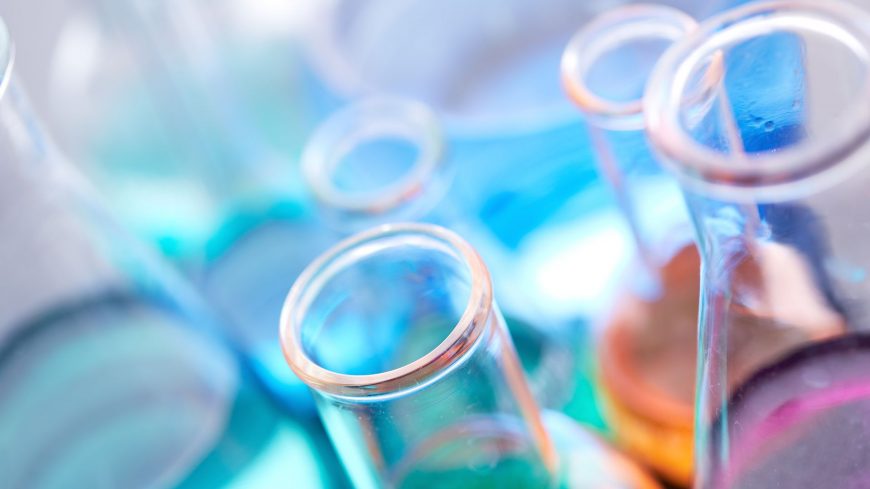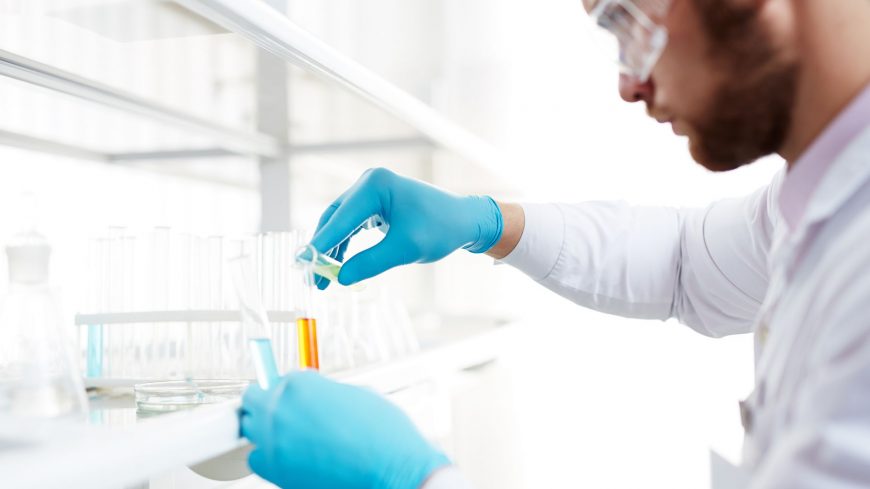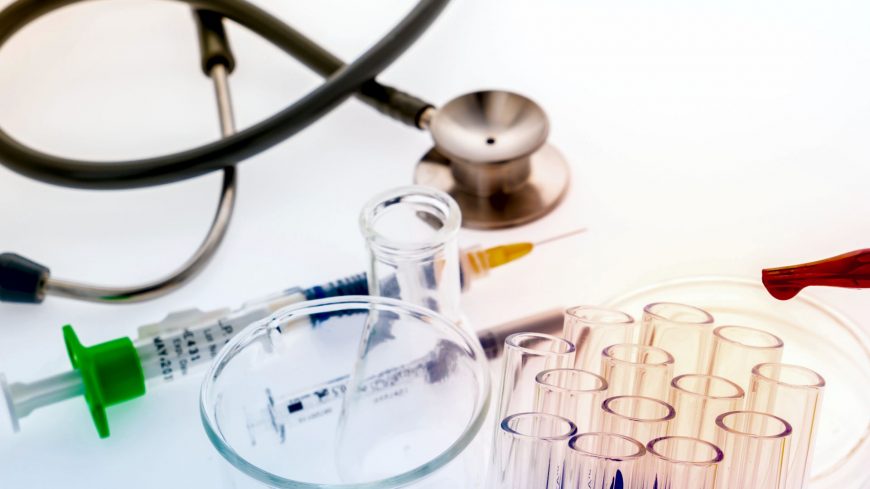Without laboratories men of science are soldiers without arms."
Louis Pasteur
Here we discuss ten ways to control or minimize contamination in a molecular laboratory.
1. Laboratory Construction
Contamination prevention starts with the construction or set-up of a PCR laboratory. At a minimum, two areas should be designated for PCR testing: Pre- and Post-PCR. One room or area should be designated specifically for Pre-PCR. Optimally, this room should be further divided into two areas, PCR master mix preparation and sample preparation/addition to master mix.
•Master mix preparation can be separated from sample addition by using a Dead Air Box (DAB) with UV light. The DAB houses consumables and dedicated small equipment (mini-centrifuge, vortex, pipettors, tips, and tubes) needed for master mix preparation.
•Sample preparation may involve a manual or automated extraction. Consumables and small equipment (mini-centrifuge, vortex, pipettors, tips, and tubes, etc.) needed for sample preparation could either be on the bench top, in another DAB, or in a Biosafety Cabinet (BSC) depending on the type of samples with which you are working. This area would also be used for adding sample to your PCR master mix.
•There should be one dedicated refrigerator/freezer for kit storage and another for storage of samples.
A second room (Post-PCR) should be established for post amplification steps and analysis. This room should be physically separated from the pre-PCR room. The post-PCR room is where the thermal cyclers for amplification and any instrumentation needed for post-PCR analysis (e.g. Luminex® 100/200™, MAGPIX®) should be located. Ideally, a DAB would be used in this area for any steps that require manipulating open tubes after PCR amplification. The DAB should house consumables and small equipment (mini-centrifuge, vortex, pipettors, tips, and tubes) needed for post-PCR preparation.
2. Environmental Control
These two areas (Pre-PCR and Post-PCR) should have independent environmental control and not use common ductwork for air conditioning. Moreover, both rooms should be equipped with air-lock doors. Note: If physical barriers or separate rooms cannot be established for Pre-PCR and Post-PCR work, all efforts should be taken to set up the work areas as far apart as possible. Lab techs should treat these two work areas as if they are in separate rooms. Care should be taken to wear different personal protective equipment (PPE) in each area.
3. Unidirectional Workflow
The workflow of a molecular lab should continue in one direction only, i.e. Pre-PCR > Post-PCR. PCR master mix reagents and samples that may contain templates for PCR should be prepared in the pre-PCR room only.
Tubes that have undergone amplification in the post-PCR room contain amplicons (amplified template) and should never, under any circumstances, be opened or introduced in the pre-PCR room. Amplicons can serve as template for future PCR reactions and therefore could easily contaminate PCR or sample preparation reagents, consumables, or equipment.
This means that consumables and PPE (lab coats, gloves, goggles, etc.) that have been introduced into the post-PCR room should never be placed back in the pre-PCR room without thorough decontamination.
When moving from room to room, a lab tech must remember to change PPE. Ideally, technologists who have worked in Post-PCR should not go back and work in Pre-PCR. If one must go against the unidirectional workflow, care should be taken to change PPE.
4. Dedicated Consumables and Equipment
Another way that we can minimize contamination in a PCR laboratory is by using consumables and equipment dedicated to each room. Each room and/or work area should have its own centrifuge, vortexers, pipettors, gloves, coats, etc. For example, never “borrow” a post-PCR pipettor for use in a pre-PCR room without thoroughly decontaminating the pipettor first.
5. Use of Aerosol-Resistant Pipettes
When pipetting samples, even the most seasoned technician can create aerosols without the proper pipetting technique and pipette tips. Aerosols can lead to cross-contamination from sample-to-sample. Aerosol-resistant pipette tips have a barrier, which acts as a seal when exposed to potential liquid contaminants, trapping them inside the barrier. This protects the pipettes from any liquid contaminants.
6. Pipetting Technique
In any molecular assay, proper pipetting technique is critical to the performance and quality of your results. Moreover, correct pipetting technique can minimize contamination between samples that can lead to false positive results. Proper pipetting technique ensures that the accurate volume is aspirated and dispensed and avoids splashing when dispensing liquid. Open and close all sample tubes and reaction plates carefully so samples don’t splash out. Spinning tubes/plates before opening can prevent aerosols when opening tubes. Also remember to always keep reactions and components capped whenever possible. One of the most efficient ways to prevent cross-contamination is through the use of a good pipetting technique.
7. Frequently Changing Gloves
A lab technician should always wear fresh gloves when working in a PCR area. Change gloves frequently, especially if you suspect they have become soiled with solutions containing template DNA.
8. Aseptic Cleaning Technique
Proper aseptic cleaning should be carried out periodically before and after PCR work. This applies to all work surfaces including bench tops, pipettors, fridge/freezer handles, and any other touch points. We recommend wiping down and soaking these surfaces using 10-15% (0.5-1% Sodium Hypochlorite) bleach, made fresh daily.2 After fifteen minutes, use a DI water-dampened paper towel to remove bleach residue. This can be followed by a 70% alcohol dampened paper towel to help quickly dry the surfaces. In addition, dunking used racks in fresh 10% bleach after use for at least 10 minutes, then rinsing and air-drying overnight can prevent further contamination.
9.Wipe Tests
Periodic wipe tests should be implemented as a standard procedure to proactively monitor the laboratory environment for contamination before it becomes an issue. At a minimum, wipe tests should be performed on a monthly basis. This frequency should be increased if any contamination is suspected. Instructions on how to perform the wipe test can be found on page 21 of the package insert for our xTAG GPP assay. This is recommended by the College of American Pathologists (MIC.64850 Sample/Amplicon Contamination).
10. Positivity Rate Monitoring
It is standard practice to include a positive control to assure proper performance of extraction and amplification and functionality of the reagents. A no-template control (NTC) is used to check for the absence of contamination in the reagents, consumables, and environment. In addition to positive and negative controls, laboratories should establish a standard procedure to monitor positivity rate. Any sudden increase in positive specimens for which a cause cannot be determined (i.e. seasonal outbreaks), should be investigated. This is recommended by the College of American Pathologists (MOL.20550 Test Result Statistics).
Written by Mai Peltz
The lack of order in the lab leads to waste of resources (time, money and supplies), reduced efficiency and a chaotic atmosphere. In this post I will show you how a lab should ideally be managed. Don’t be fooled: order doesn’t come cheap as it requires investment of resources (mostly time but sometimes a little bit of money can help too).
Your Bench – Entropy in Action?
It is common knowledge that if you’re doing work you’ll be making a mess unless you invest further energy to the process of keeping everything in order (look at your bench at the middle of an experiment and see what I mean). Of course, if you and any lab member invest more energy toward thinking and working in an orderly fashion, you can actually maintain order and keep your bench tidy until the end of each day’s work. Yeah, it takes energy and time and it might not help you enough to get a stellar publication, BUT it will make your experimenting much more pleasant and even more importantly, it will lower the clutter of stuff in front of your eyes, a classical protocol to getting a clutter head, getting out of focus in the middle of an experiment and eventually, making a mistake and at best noticing the error and throwing the whole experiment to the nearest biohazard baggy. Which brings up the question “How to correctly arrange your bench?” The answer is as subjective as the way different people arrange an apartment with the same furniture. One will put the TV on the left wall, the other will put it on the right, and third one will throw it to the trash. In a future post I will discuss some of the strategies to adapt your bench to your personality and your own body physics.
Communal Equipment Maintenance
Order in the lab should and must not be confined to your three square feet of your own bench. Communal equipment in many cases will be dispersed among your colleague’s benches (and a few items will even have a permanent seat on your own bench!) and some of them can be a real source for disorder (balance tubes for centrifuges rolling around, analytical weights with powder leftovers). It is recommended that the PI/lab manager enforce a lab cleanup at least once a year (twice a year is better) so to make sure that each member cleans up his own bench as well as the communal places and equipment. This is also a good time to calibrate the equipment (pipettors, weights, pH & conductivity meters) as well as fastens the bolts of the centrifuges. Good maintenance increases both the safety of using the device as well as the life span of the device without the need to order a technician (which will result in both loss of time, money and canceled experiments).
Airing Out Freezers & Refrigerators
Such a lab effort should be made also for cleaning refrigerators and freezers. Over time, a lab usually accumulates thousands of tubes containing old samples which at best have some faded marking but are not relevant any more (or in other words – junk). Freezers are more prone to such neglect than refrigerators and in many cases it goes hand-in-hand with lack of proper samples documentation. Combined with the natural tendency to retain rather than throw away samples leads to chock-filled freezers, making retrieving samples a truly cold nightmare. This is why it is crucial that all lab members throw away old or non-relevant samples, “airing” their boxes and checking that tube and box locations match their samples repository lists. If sample’s documentation is missing then lab members should take the time to fill up the gaps in their lists as it will save them even more time down-the-road when searching for a precious sample. Indeed, some of you will complain that the time required to list all the samples’ positions can take so much time that the samples will return to room temperature and will be compromised. The solution is quite simple – fill up an ice bucket with liquid nitrogen and submerge your box onto the cold bath (another option is to spill some liquid nitrogen onto the box and let the liquid nitrogen “cold-fry” your samples). Samples kept at -80 Celsius will be safe and -196 will feel right at home. Remember, unorganized freezers will most probably compromise your samples without you noticing it and with no control on your part!
Chemical Shelves, Dust and Office
There is nothing as frustrating as looking for a misplaced chemical bottle on the shelves. A lab cleaning is a good opportunity to make amends and reposition lost or misplaced bottles. Remove dust and powder remnants from the bottles as these might lead to contaminations. Talking about dust, all shelves and top cabinets should be dusted off. As well air-conditioning filters should be cleaned from years of dust accumulation, assuming they can be pulled and washed. Dust is a known source of allergies, houses viruses, microbes, and chemical particles and might lead to contamination.
And one last place – don’t forget to cleanup your student’s office. True, in these rooms there are no chemicals, solutions or precious equipment that needs maintenance. But, many of you find yourselves in there a couple of hours a day, resulting in piles of printed articles, ads from various vendors or just a clattery PC desktop with pens and trash. Believe me, cleaning up this room will make you want to finish up your experiment even faster than you wanted before!
From Labguru – http://blog.labguru.com
Go inside a clinical microbiology lab at Penn State Milton S. Hershey Medical Center and learn about careers in clinical microbiology.




